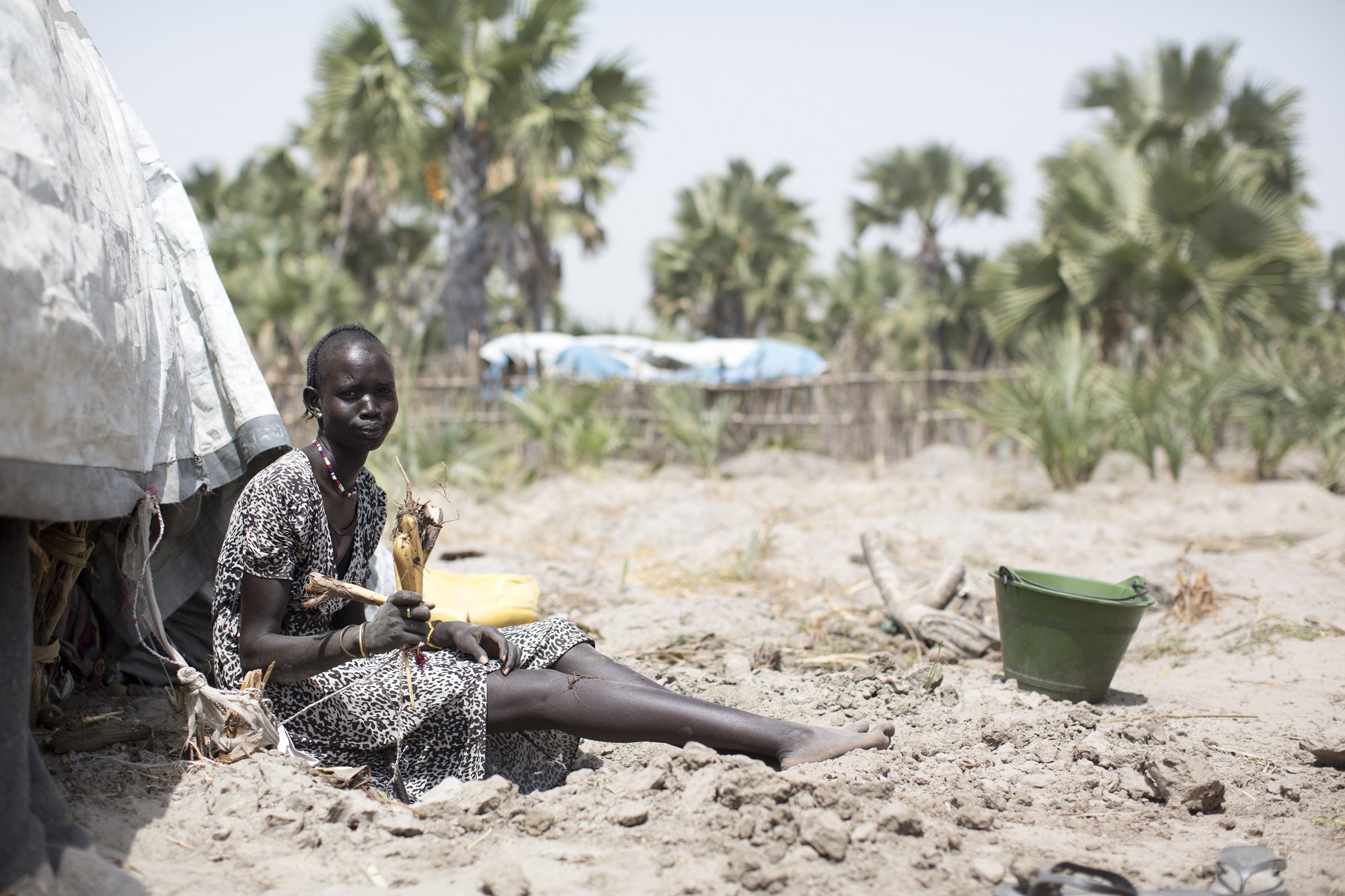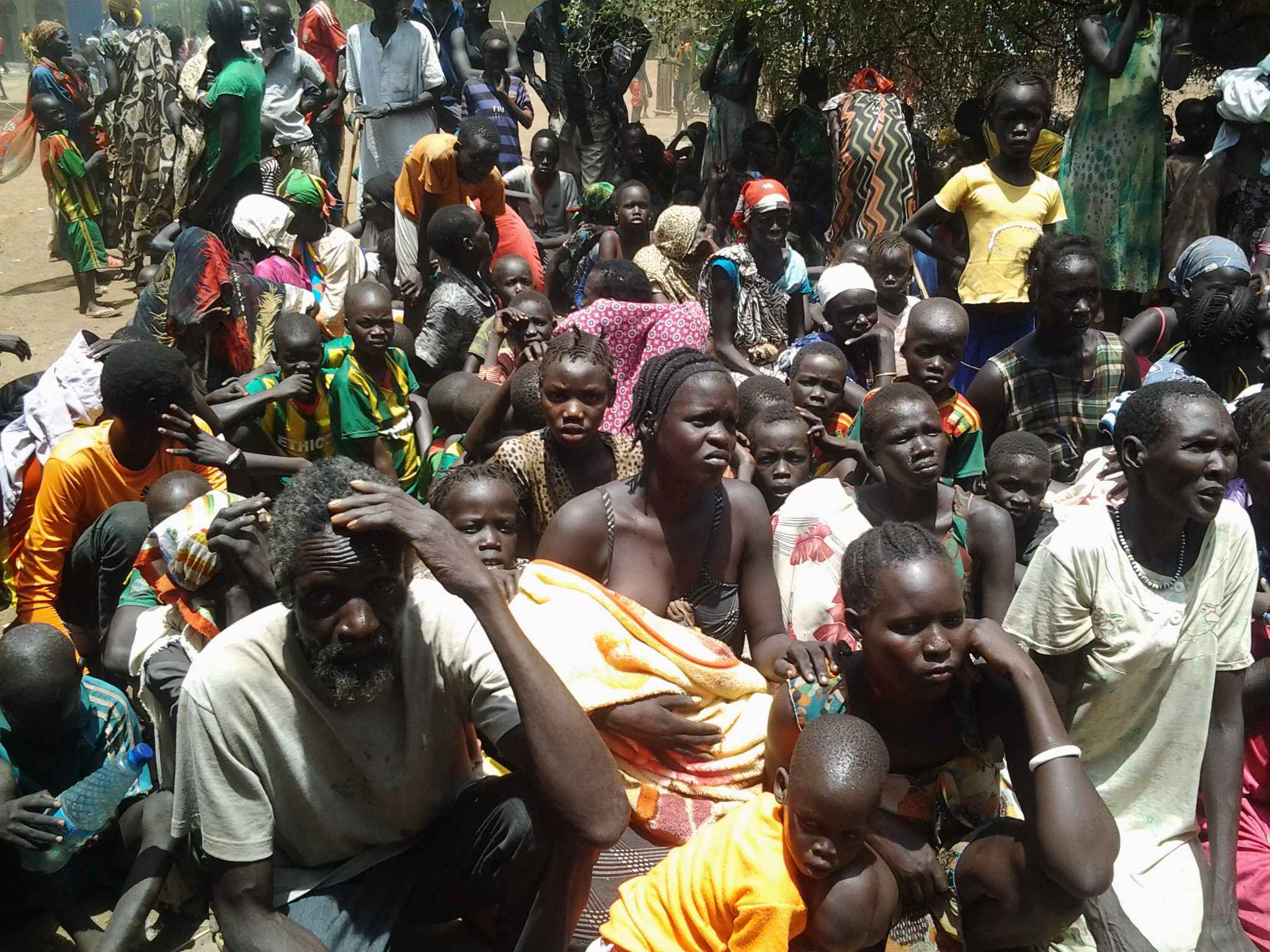UNHCR increases aid as South Sudanese refugees stream into Ethiopia
UNHCR increases aid as South Sudanese refugees stream into Ethiopia

GENEVA, 15 April 2014 (UNHCR) - UNHCR announced on Tuesday it had begun airlifts and construction of new camps to help South Sudanese refugees fleeing to Ethiopia, who now total more than 95,000 and are growing at up to 1,000 a day.
The UN refugee agency told reporters it was working with its partners to improve conditions in Ethiopia's western Gambella region - flying in new tents, building camps and moving refugees to higher ground as the rainy season approaches.
On Monday the first flight in an airlift of 4,000 emergency tents arrived at Gambella airport. Those 400 tents were being sent to Lietchuor refugee camp, 125 kilometres from Gambella town, on Tuesday.
The remaining tents will arrive on six flights over the coming days for distribution to other camps operated by UNHCR and Ethiopia's Administration of Refugees and Returnees Affairs (ARRA) in Gambella Regional State.
UNHCR has now finished relocating refugees who were living in flood-prone areas in Kule camp, 42 kilometres from Gambella town, to higher ground. A similar relocation will start at Leitchuor camp on Tuesday. With the rainy season approaching, some parts of the camps were already affected by flooding.
Last weekend, UNHCR and ARRA started clearing the area for a new camp close to Kule on land donated by the Gambella regional administration. It will accommodate up to 30,000 refugees and be located on high ground. The camp is expected to be ready by the end of April.
"Refugees continue to arrive from South Sudan into the Gambella region at a rate of 800 to 1,000 people per day, mainly through the Pagak border point," UNHCR spokesperson Melissa Fleming told a news briefing.
Some 95 percent are women and children from the Upper Nile State, with many citing fear and food scarcity as the main reasons for their flight. Many women reported men are forcibly recruited, while others have been killed.
"Some refugees have walked up to three weeks to cross the border and malnutrition rates among children remain high," Fleming said.
More than 4,000 malnourished children are in nutrition programmes in the camps, while some 3,500 lactating women are receiving supplementary feeding. However, UNHCR reported a slight easing in the number of arrivals in Ethiopia since WFP began airdrops of food in South Sudan itself.
With the ongoing influx and the rainy season imminent, regional authorities have granted space on higher ground at the Pagak border point to build a transitional reception centre. The new centre will accommodate up to 5,000 people and provide accommodation while refugees are registered and receive vaccinations, health, nutrition, and other basic services.
UNHCR has deployed a helicopter to transport vulnerable people - the elderly, the disabled, pregnant and lactating women, newborns and sick people - from the Akobo border point to the Lietchuour refugee camp.
Most refugees arriving to Akobo travel by boat up to 15 hours to Burubiey, another entry point, from where they are eventually settled in refugee camps. Some 190 vulnerable people unfit to make that boat trip have been moved to Leitchor camp in 11 flights over the past two weeks and the 30-minute flights are continuing.
Some 86,000 refugees fleeing South Sudan's current conflict now reside in four camps -- Kule, Lietchuor, Pugnido and Okugo -- with a further 9,600 still to be relocated from border points.
UNHCR and partners need to raise USD 102 million to meet the basic needs of South Sudanese refugees in Ethiopia. Of this, UNHCR requires USD 43.6 million, with only 12 percent so far funded.








